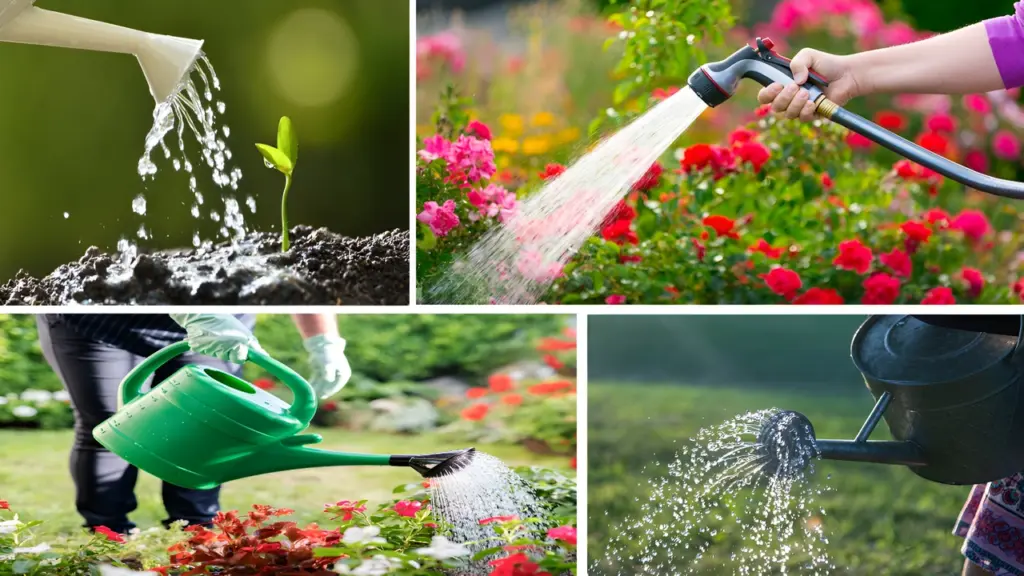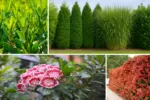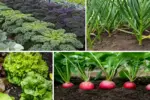Join on WhatsApp
Get the latest updates directly on WhatsApp – motivation, news & more!
Watering your plants might seem like one of the simplest tasks in gardening, but it’s where many gardeners—both new and experienced—go wrong. Patio pots, hanging baskets, backyard beds, and even container vegetables all have different water requirements. Understanding how, when, and how much to water is key to a thriving outdoor space.
In this guide, you’ll learn the proper way to water patio and backyard plants without wasting water or stressing your green companions.

Why Getting Watering Right Really Matters
At the heart of every healthy plant is a well-balanced water routine. The right amount of water at the right time doesn’t just keep plants alive—it helps them thrive.
Proper watering:
- Encourages strong root systems
- Boosts resistance to pests and diseases
- Improves flower and fruit production
- Prevents leaf scorch and root rot
- Reduces overall plant stress
Neglecting watering—or overdoing it—can undo all your hard work in the garden.
Understand the Plants You’re Growing
Every plant has its own unique thirst level. The needs of a potted rose differ from those of a succulent or a tomato vine.
Know the Water Preferences:
- Drought-tolerant plants (e.g. lavender, succulents, sage): Water when the soil is completely dry.
- Tropical or moisture-loving plants (e.g. ferns, caladiums): Keep soil lightly moist at all times.
- Vegetables and herbs: Need consistent watering, especially when flowering or fruiting.
- Young plants or transplants: Require frequent, gentle watering as roots develop.
Read plant tags, do a bit of research, or keep a garden journal to track water preferences.
Read the Soil Before Reaching for the Hose
Instead of watering by a fixed schedule, check your soil first. Dry surface soil doesn’t always mean the plant needs water.
Simple Soil Test:
Stick your finger about two inches into the soil:
- If it feels dry, it’s time to water.
- If it’s cool and damp, hold off.
- If it’s soggy, improve drainage and cut back immediately.
For even more accuracy, consider using a soil moisture meter.
Water Deep, Not Just Often
One of the most common mistakes is shallow watering. Light sprinkles do little more than moisten the topsoil.
Why Deep Watering Works:
- Encourages roots to grow downward
- Builds drought resistance
- Reduces the frequency of watering over time
Let the water soak down to at least 6–8 inches. You’ll use less water overall and create stronger, more resilient plants.
Target the Base—Not the Leaves
When watering, aim for the base of the plant, not the foliage.
Wet leaves, especially in humid climates or shady areas, can lead to fungal diseases like mildew and blight. Water directly at the soil line to minimize waste and protect your plant’s health.
Time Your Watering Wisely
When you water can be just as important as how much you use.
Best Times to Water:
- Morning (ideal): Cooler temperatures mean less evaporation, and the plants are hydrated before the heat of the day.
- Late afternoon/early evening: Acceptable if you avoid soaking the foliage. Ensure leaves dry before nightfall to prevent mold.
Avoid midday watering, especially in hot weather—most of the water will evaporate before reaching the roots.
Adjust for Pots, Beds, and Climate
Watering isn’t one-size-fits-all. Consider the location and container type.
- Pots and hanging baskets: Dry out quickly, especially in summer. May need daily watering.
- Raised beds: Retain moisture longer but may still need deep watering during dry spells.
- Shaded vs. sunny spots: Shaded areas stay moist longer; sunny areas may dry out faster.
- Windy balconies or patios: Wind increases evaporation—keep an eye on soil more often.
Also, adjust based on seasons. Plants usually need less water in cooler months.
Choose the Right Watering Tools
Using the correct tool can make a big difference in watering efficiency and plant health.
Useful Watering Tools:
- Watering cans: Great for small spaces and precise watering.
- Soaker hoses: Ideal for garden beds; slow-release watering at the base.
- Drip irrigation systems: Excellent for water conservation and consistent moisture.
- Hose with a spray nozzle: Use a soft shower setting to avoid soil displacement.
- Self-watering pots: Convenient for busy schedules or vacation periods.
Investing in good tools not only saves time but helps prevent watering mistakes.
Don’t Skip the Mulch
Mulch is a water-saving hero, especially for backyard beds and large containers.
Spread a 2–3 inch layer of organic mulch (like bark, compost, or straw) around your plants. It helps:
- Retain soil moisture
- Keep roots cool
- Prevent water runoff
- Suppress weeds that compete for moisture
Mulch breaks down over time, improving your soil as it goes.
Watch Out for Common Watering Mistakes
Even the most enthusiastic gardeners fall into these traps:
- Watering too often: Leads to root rot, fungus, and shallow root systems.
- Underwatering: Causes wilting, browning leaves, and stunted growth.
- Spraying the leaves: Wasteful and promotes disease.
- Not adjusting for weather: Rainy week? Skip the watering. Heatwave? Water more frequently.
- Ignoring drainage: Ensure containers and beds don’t trap water at the roots.
Awareness is the first step toward better watering habits.
Try Sustainable Watering Methods
Looking for ways to save water while keeping your garden lush? Here are some eco-friendly strategies:
- Use rain barrels to collect water for future use.
- Reuse “clean” greywater from rinsing fruits or vegetables.
- Hydrozone your garden by grouping plants with similar water needs.
- Install smart irrigation timers to automate and fine-tune watering schedules.
Small changes can lead to big savings—for your water bill and the planet.
Final Thoughts
Mastering how to water patio and backyard plants properly isn’t just about routine—it’s about observation, adaptation, and care. When you take the time to understand your plants, check the soil, and water deeply and thoughtfully, the results show in every flower, leaf, and harvest.
A well-watered garden is not only more beautiful, it’s more resilient—and that’s what every gardener wants.




